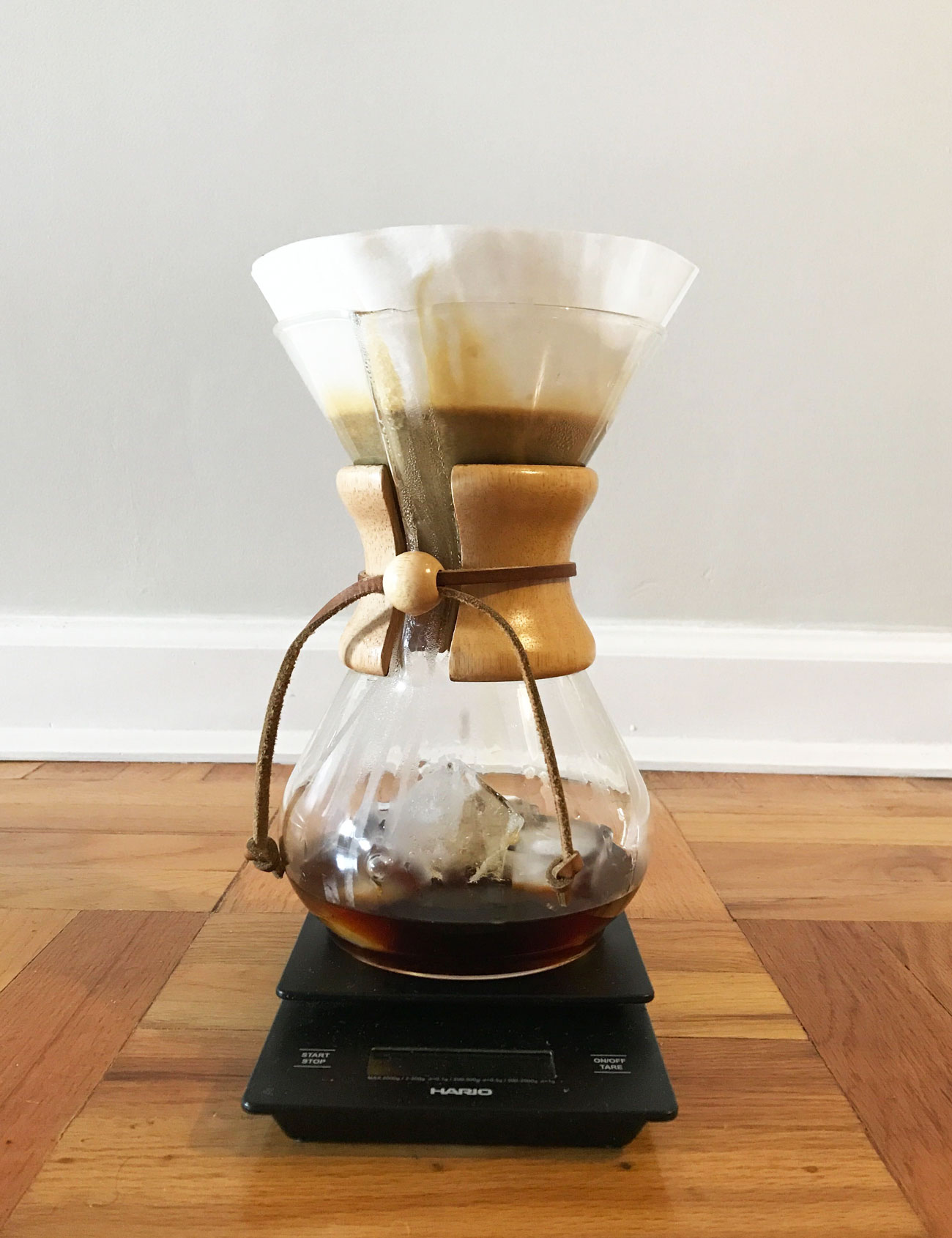Forget your cold brew and your stale day-old iced coffee. The best cold coffee is iced pour-over coffee, otherwise known as Japanese-style iced coffee. And it’s the only kind of coffee I drink in the summer.
A few years ago, cold brew became the leading variety of cold coffee — so much so that it’s now a staple at Dunkin’ and Starbucks. A bastardized version even appears at McDonald’s. But cold-brewed coffee produces a beverage that lacks any zippy acidity and is too rich and chocolatey for my tastes — especially when I want something refreshing in the summer.
Iced pour-over coffee, considered Japanese-style because the country popularized the method, is also called flash-chilled coffee. This method of brewing involves brewing a regular pour-over coffee, but subbing in a third of the hot water for ice, which is placed in the carafe. The method of brewing hot and immediately chilling it locks in the coffee’s flavor before it has time to oxidize and get stale.
“Brewing with hot water lets you extract more flavor from the grounds, giving you a complex and interesting cup of coffee that captures the flavors that give you some idea where and how that coffee was grown,” James Hoffmann, author of The World Atlas of Coffee, 2017 World Barista Champion and all-around cool Youtube coffee person, says.
Cold brew takes hours to make because it takes time for the cool water to extract enough quality flavors from the ground coffee. On the other hand, iced pour-over coffee takes under five minutes for a drink that’s more flavorful. Many baristas used cold brew as a way to get usage from past-their-prime beans since cold brew results in the same one-note flavor profile regardless of what beans are used.
“Brewing with cold water tends to produce a slightly more generic coffee flavor, and you can also have some issues with oxidation. The longer you leave coffee, water and air together the more oxidization you will get,” Hoffmann says.

You can’t make a large batch of coffee like you can with cold brew, but iced pour-over coffees don’t take any more time than making a regular cup of pour-over. I use a Chemex for my iced pour-over because it’s the only coffee maker I have and it’s gotten me through four years of daily coffee brewing. I prefer a single-origin bean for its lighter, fruiter flavor, which results in a crisper, more refreshing beverage. And my preferred 1:16 coffee to water ratio produces a coffee that has a bold enough flavor that doesn’t feel too heavy for summer drinking.
Using less hot water in the brewing process won’t result in a watered-down beverage. As Hoffman says, most of the coffee’s flavor comes out in the beginning of the brewing process. “Once you’ve brewed coffee once, even with less water than usual, you’ve got most of the good stuff out.”
My salvation for the hot and humid New York City summer months has been, and always will be, iced pour-over coffees. When I want to give my air conditioning a break, my coffee is a pleasant respite from the intolerable weather. And even when fall comes around, these iced pour-overs are a cool treat because it’s always a perfect time for iced coffee.
How to Make Iced Pour-Over Coffee
1. Boil water between 195°F and 205°F.
2. For a Chemex, or other brewer with a paper filter, rinse the filter with hot water to remove any papery flavors.
3. Add 165 grams of ice and add the filter to your brewer along with 30 grams of coarsely ground coffee.
4. Slowly pour 60 grams of hot water evenly over the grounds to allow the coffee to bloom. Wait 45 seconds.
5. Pour another 150 grams of hot water of the grounds making sure to hit any dark spots to ensure proper extraction. Allow to drip for about a minute before adding another 105 grams of hot water.
6. Allow the water to fully drip through the filter. Remove the filter and grounds, and swirl the carafe to meld all the flavors together, then pour into an ice-filled glass to drink.

